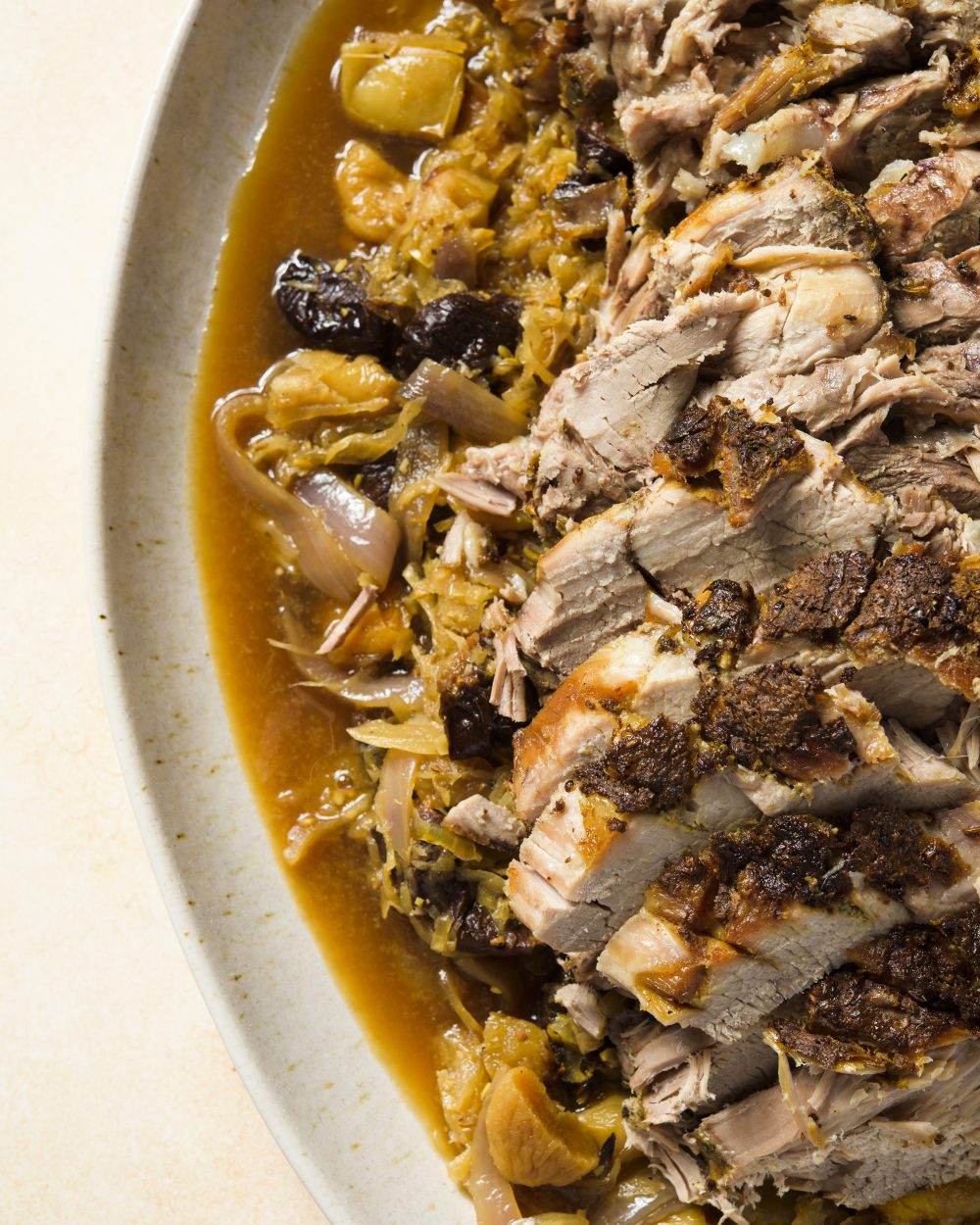All too often, sauerkraut is typecast as a condiment, relegated to the role of a simple sandwich sidekick or a one-note hot dog topper. But as Olia Hercules will tell you, it is so much more.
She should know. The Ukraine-born, London-based chef and author grew up on the stuff, her mother routinely fermenting cabbage to ensure a steady supply at home. And for Ukrainians, it’s an ingredient with star power.
“It’s such a huge part of our cooking life,” Hercules says. That’s because, in addition to its trademark tangy brightness, sauerkraut develops deep complexity as it ferments. “It’s done so much work during those months developing all those amazing flavors, but then you can use it in cooking as well, which people don’t necessarily realize,” she says.
Straight from the jar, it makes for a zesty, crunchy salad, needing only the addition of sliced vegetables and a drizzle of sunflower oil. But when it’s cooked down, its flavors mellow and meld with other ingredients. It is stuffed into dumplings, stirred into soups and stews, and added to meat dishes—especially pork, as the tangy cabbage is an excellent foil for its richness.
“Sourness cuts through the fat, and kraut does that so nicely,” Hercules says. As such, Ukrainian cuisine is full of riffs on the classic pairing of pork and sauerkraut.
So much so that it plays a role in a favorite holiday memory. During one Christmas trek home, Hercules arrived to discover her mother’s latest culinary invention: slow-roasted pork cooked with sauerkraut, apples and dried fruits, spiced with caraway, coriander and fennel. “It was the best thing I had ever eaten,” she recalls.
She notes that her mother’s creation has a lot in common with kapusniak, a traditional pork and sauerkraut stew. “But then she just jazzed that up,” she says. “And she just made it better—she made it dandy.” What started as a Christmas dish now has made it into Hercules’ regular repertoire during the cold-weather months. “It’s good all the time,” she says.
Not surprisingly, the recipe makes an appearance in her cookbook “Summer Kitchens” (along with other sauerkraut-enhanced dishes). The book’s title refers to the Ukrainian tradition of building small outdoor structures reminiscent of miniature houses, complete with their own masonry ovens (known as piches). These summer kitchens served as a dedicated cooking space, which kept the main dwelling from overheating on hot days. But they remained a useful prep space all year long.
In autumn, it was where fruits and vegetables were preserved for the cold months ahead. September marked the start of sauerkraut season, when the weather finally was cool enough for fermentation. “My grandparents probably would have had a proper barrel of the stuff,” Hercules says. Underneath all that shredded cabbage were placed whole leaves, especially prized for making stuffed cabbage rolls.
Sauerkraut may be ubiquitous, but there is no one single way to make this Slavic staple. When Hercules ferments her own, she adds shredded carrot to the mix, the way her family in southern Ukraine does. Other additions could include fruits, such as grated quince.

In central Ukraine, it might be apples. And you’re apt to find sauerkraut spiked with berries in the marshy, tree-covered northwest corner of the country. “That’s where people go picking cranberries, loganberries, bilberries—all that woodland fairytale stuff,” she says.
While Hercules has great reverence for her homeland’s foods, she’s not afraid to experiment. In that same spirit, she encourages home cooks to play around with her recipes. Her slow-roasted pork dish is no exception, whether it’s tweaking the spice blend or opting for a different cut of pork. “You can use whatever cut is available,” she says. “Just make sure that the pork has a nice layer of fat.” This ensures that the meat is meltingly soft.
We were just as smitten with the dish as Hercules had been at first bite. We loved how the sauerkraut took on the rich flavor of the pork drippings, and how the combination of the tart cabbage and sweet fruits balanced the savory meat. In our version, we opted to use bone-in pork butt. But otherwise, we made sure to stick to one rule: Don’t hold back on the kraut.






